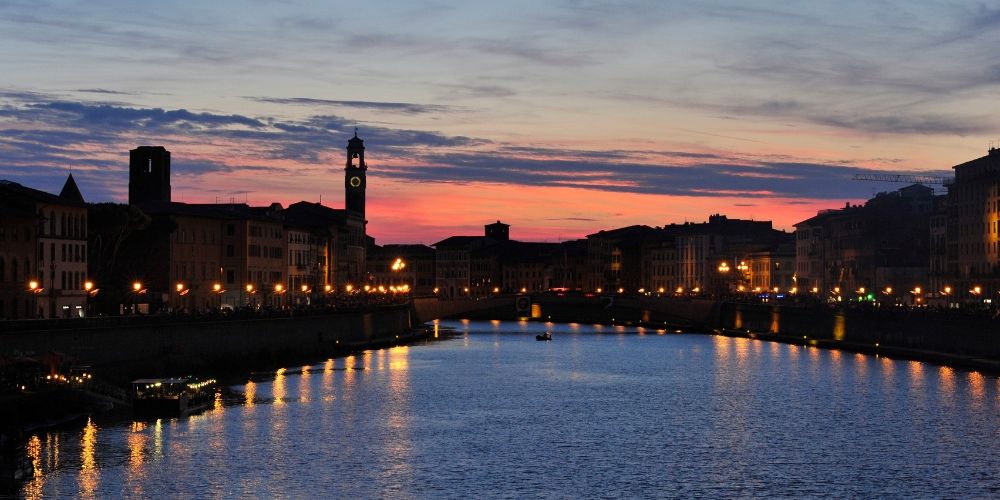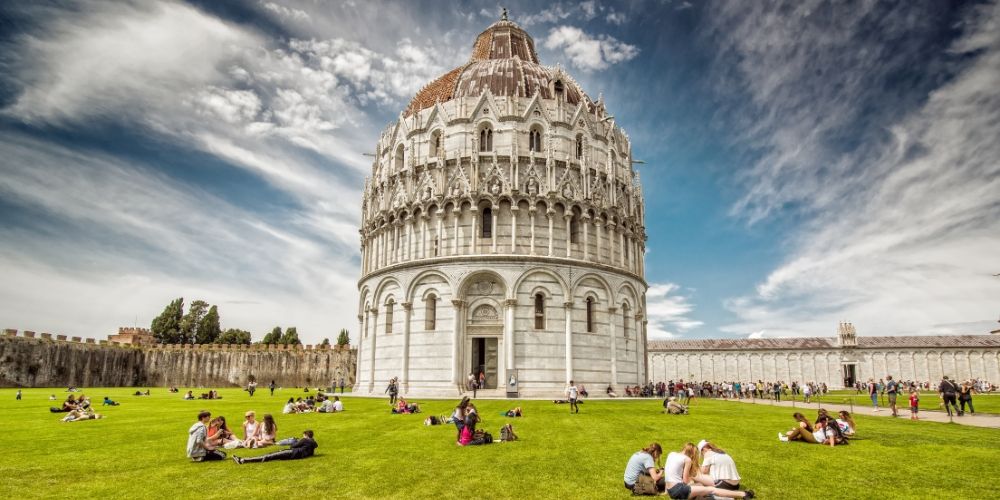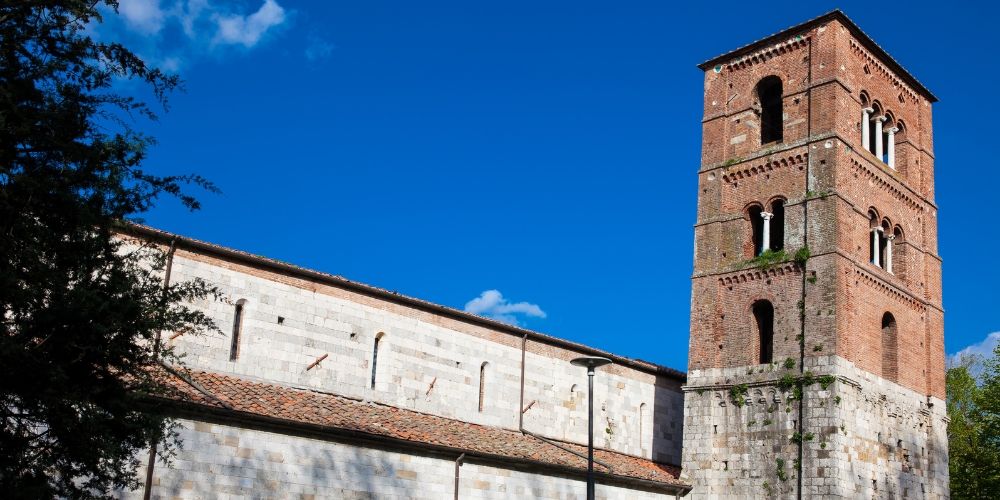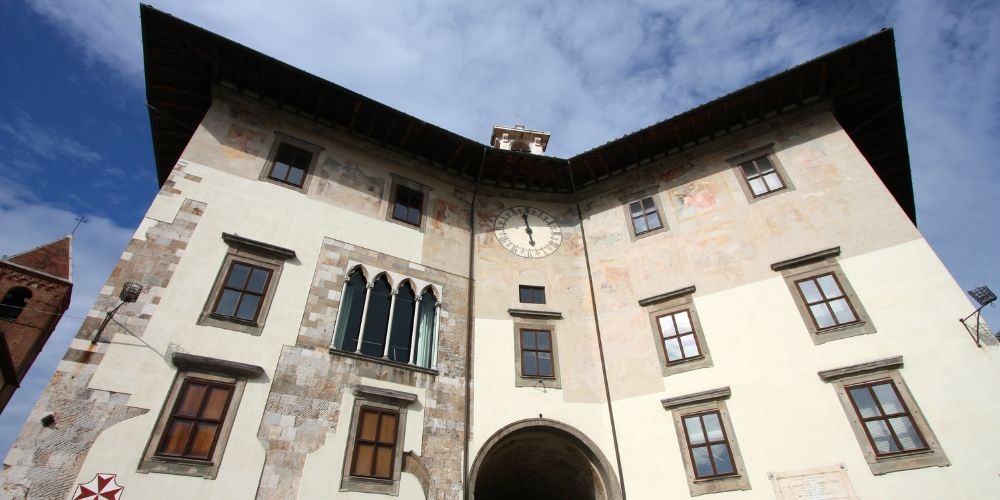Discover what to do in Pisa like a local. Live your best experience in the city with our 10 suggestions inspired by the habits of the Pisans.
What about visiting Pisa like a local? Of course, after holding up the Leaning Tower with your outstretched hands to prevent it from collapsing to the ground.
We would never deprive you of the traditional posed photograph, but after that, it's time to dive into the Pisans' true habits and locals' much-loved city sights. Let's get started!

What to do in Pisa like a local

Super famous, super photographed. The former Maritime Republic, home to two prestigious universities (La Normale and Sant'Anna) and a Unesco Heritage jewel, is a tremendous artistic and cultural tradition repository.
Discover what to do for visiting Pisa like a local with tips inspired by those living in Galileo's hometown.
Dynamic, cultured and informal, it's at its best between May and October. At the end of spring, with the lively Giugno Pisano, it gets glorious and welcoming, with multiple events that make it an even more attractive destination.
To visit Pisa like a local, you must go beyond Piazza dei Miracoli, Keith Haring's mural on the Church of Sant'Antonio Abate or the Royal Palace. And add a touch of originality to your wandering.
Emulate Pisan students, taste the best Tuscan wines, have an aperitivo as the sun sets over the Arno and read a good book in a secret place. We are going to reveal everything point by point in order to make your stay a special experience.
Book Pisa guided day trip from Florence❯10. In Pisa like a local: going around like students

Although school years are now just a memory, there is no reason not to get inspired by Pisa's teenage students for a fun and extensive itinerary around the city and its surroundings. The idea is to take a cue from the superstitious rituals taken before the end of the study cycle and visit Pisa like a local with a pinch of irony.
One hundred days before the final exam, girls and boys are drawn into a collective well-wishing ritual, a sort of pilgrimage in stages to propitiate the coveted promotion.
First, a visit to the sanctuary of Montenero, among the most famous places of worship in Tuscany. Then, a stop at the beach in Tirrenia to write the desired score in the sand. And finally, head to the city centre, straight to Piazza dei Miracoli: the students walk around the Baptistery a hundred times and stroke the bronze lizard on the cathedral door.
Book Pisa Self-Guided Audio Tour❯9. Tasting Tuscan wines
A region of wines and vineyards, it's impossible to avoid sipping a good glass with satisfaction when in Tuscany. In the Pisa area, viticulture is an ancient practice that counts ten denominations of origin, with Sangiovese, Ciliegiolo, Canaiolo Nero, Malvasia Nera and Trebbiano Toscano as the main grape varieties.
Among the Pisan hills, you learn to appreciate the best local production, which stands out thanks to the peculiarities of an area happily predisposed to the purpose: right altitude, right ventilation, right proximity to the sea.
The tasty idea? Join a guided tour of Pisa including a tasting of local wines. Your guide will take you on a tour of the famous monuments of Piazza dei Miracoli: the massive Duomo, the refined Baptistery and the storied Leaning Tower. Eventually, a local expert will initiate you to the pleasures of Tuscan wine.
Book guided tour of Pisa with wine tasting❯8. Visiting a borgo near Pisa
How beautiful are the Tuscan villages? Near Pisa, you can find some amazing borghi. Only sometimes famous abroad, they are worth (more than) a visit.
Peccioli, for example, is a 'rainbow village', strongly defined by colour and art, that has managed to draw culture and beauty from its futuristic landfill site, an attraction in its own right. This small town features a gracious district, Ghizzano, which is among the most beautiful in Tuscany, with the multicoloured houses in Via di Mezzo as a highlight.
Discover the small medieval village of Lari, halfway between Pisa and Volterra. In the shadow of the ancient Castello dei Vicari you can taste the delicious local cherries, the fruit par excellence of the Pisan countryside. Speaking of food, we suggest a stop in San Miniato, the Tuscan capital of the white truffle.
About 20 kilometres from Pisa, Vicopisano is another ideal destination for an out-of-town trip: 13 medieval towers, an imposing fortress designed by Brunelleschi, and an incredible landscape.
7. Attending a brightening celebration

This celebration is among the most heartfelt events in the city. Therefore you must attend it to visit Pisa like a local. As a much-awaited moment, locals keep on discussing, adoring, and criticising its organisation year after year. The main topic of late spring 'bar talk' certainly doesn't leave anyone indifferent.
We are talking about the traditional Luminara di San Ranieri, which lights up the night on the charming Lungarno with thousands of glowing wax candles.
The flames are arranged on special scaffolding called 'biancherie', which draws the outlines of the buildings along the River Arno, glittering with golden reflections.
On the evening of 16 June, the day of San Ranieri, Pisa's patron saint, citizens and tourists turn their noses upward to admire the evocative, romantic setting. The celebration culminates in a festive fireworks display, a flashy goodbye to the following year.
6. Having an aperitivo on the 'spallette'
The perfect aperitivo in Pisa like a local is along the so-called spallette, stone-and-brick walls lining the River Arno. In spring and summer, Pisans grab a spot on the barriers for a gelato or a drink while the setting sun performs its usual light and colour show.
Borgo Stretto, a medieval, arcaded and colourful district populated by bars and university students, is another popular area for happy hour.
Also, Piazza delle Vettovaglie, Piazza Garibaldi and Piazza della Berlina are among the most favoured city spots for an aperitif or an after-dinner drink with friends. There are many pubs and clubs with outdoor tables that are especially pleasant during the summer: eat well, spend little.
5. Shopping in Pisa like a local
Pisa's historic city market is in Piazza delle Vettovaglie, a place devoted to trade and commerce since its foundation. From Monday to Saturday, the square comes alive with stalls selling fresh fruit and vegetables, various foodstuffs and clothing.
A beautiful portico borders the 16th-century quadrangle with towers and medieval buildings all around. It's one of Pisa's most characteristic sights and is located between the distinctive Lungarno and Via Santa Maria.
In Piazza delle Vettovaglie, you can buy typical Tuscan products or sit at a table in a bar and enjoy the lively atmosphere as you bite into a slice of torta coi bischeri—a must for visiting Pisa like a local.
4. Reading under a wisteria
Here is a 'secret' place to take refuge in a lovely atmosphere that gets even sweeter with the scent of the blossoming wisteria topping Pisa's most beautiful bookshop.
La Feltrinelli in Corso Italia protects a genuinely magical and not-very-known corner. Go inside and reach the inner courtyard: an undulating cascade of petals compose an ideal floral ceiling in delicate shades of purple over the stands and shelves full of books. The benches below are perfect for relaxing in the cosy Pisan spring.
Right in the city centre, between Piazza dei Miracoli and Piazza dei Cavalieri, there is another place whose time (and space) is dictated by nature: the ancient Orto Botanico, the oldest botanical garden in the world.
Cosimo de' Medici founded the complex in 1543. It's an enchanting and peaceful location to stroll and put the outside world on standby. Among thousands of rare plants, the bamboo groves are particularly captivating, deemed an 'Instagrammable small Arashiyama' that surprises visitors with its unexpected beauty.
3. Going to see the leaning tower (but not the one you would expect)

Pisans know it well - the bell tower of the Santa Maria Assunta cathedral is not the only torre pendente in town. Surprisingly, two other towers are hanging in Pisa! Here is where to find them.
Venture out to Via Santa Maria and discover the Church San Nicola, with its crooked belfry. The octagonal building dates back to the 13th century, and its authorship is still unclear (Vasari attributes it to Nicola Pisano, while others to Diotislavi).
Once you have verified that the structure is indeed leaning, take a moment to appreciate the church facade and its unique detail - a marble lunette inlaid with geometric motifs reproducing the Fibonacci sequence.
Next, head over to Via San Michele degli Scalzi to admire the church of San Michele, whose bell tower is visibly inclined with a 5% slope, more than the one in Piazza Duomo ( aka Piazza dei Miracoli).
2. Meeting an unfortunate Pisan nobleman

In the heart of Piazza dei Cavalieri lies the remains of an ancient tower, Torre della Muda, which are now a part of the wider Palazzo dell'Orologio. This location houses a museum space dedicated to the historical, literary, and artistic figure of Count Ugolino della Gherardesca, a Pisan nobleman who lived in the 13th century.
In Dante's Inferno, Ugolino is the protagonist of the XXXIII canto, where we meet him while he is devouring his sworn enemy, Archbishop Ruggieri. Also, he narrates the tragic events that led to his detention and death. The count was falsely accused of treason, imprisoned with his children and grandchildren inside the tower, and left there to die.
The "Torre del Conte Ugolino" exhibition displays a series of works related to this legendary character, including some ancient illustrated editions of the Divine Comedy.
1. Visiting an exhibition at Palazzo Blu
Head over to Palazzo Blu, an elegant building on the Lungarno Gambacorti. This historic building, dating back to the 11th century, hosts various prestigious exhibitions, an attractive permanent display, and workshops for adults and children.
As we write, a temporary exhibition dedicated to the 20th-century avant-garde is underway, featuring works by some of the most famous artists of the era, including Picasso, Matisse, Mondrian, and Klee.
Palazzo Giuli Rosselmini Gualandi is an ancient residence that has undergone several alterations over the centuries. In the '700s, the peculiar bluish colour was added, which is said to have been chosen to meet the taste of St. Petersburg guests.
Palazzo Blu is also close to some of the city's most famous attractions in the heart of Pisa's historic centre. Cross the Arno River to discover some hidden gems, such as the Cinema Lumière, one of Italy's oldest cinemas, now a famous live club. And just a few steps away, you'll find Caffè dell'Ussero, a historic café founded in 1775, housed in one of the city's most beautiful buildings, Palazzo Agostini.
If you want to find more about Pisa, read our article to discover other incredible experiences not to be missed.



